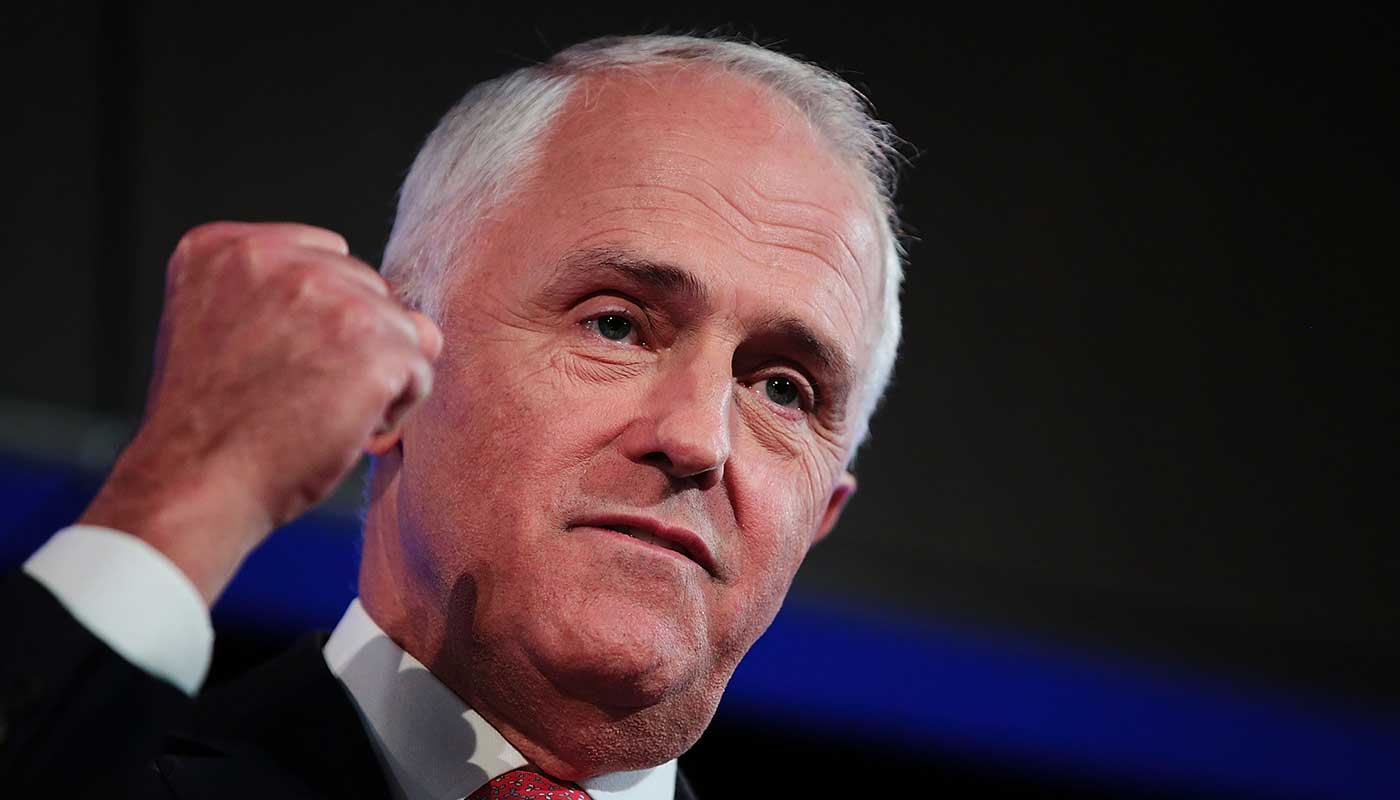Why Australia abandoned its Paris climate agreement plans
Prime minister caves in to backbench pressure amid leadership crisis

Australian Prime Minister Malcolm Turnbull has abruptly reversed that country’s position on climate change targets, after stripping targets agreed at the Paris climate agreement talks from his key National Energy Guarantee legislation.
Why has Turnbull changed direction?
Turnbull abandoned the plan to cut emissions by 26% by 2030, in the face of strong objections from a faction within his own conservative party, led by former prime minister Tony Abbott, whom Turnbull challenged and replaced to lead the country in 2015.
The Week
Escape your echo chamber. Get the facts behind the news, plus analysis from multiple perspectives.

Sign up for The Week's Free Newsletters
From our morning news briefing to a weekly Good News Newsletter, get the best of The Week delivered directly to your inbox.
From our morning news briefing to a weekly Good News Newsletter, get the best of The Week delivered directly to your inbox.
The backdown by Turnbull has led to a tumultuous 24 hours in Australian politics, with considerable media speculation that home affairs minister Peter Dutton could challenge for the leadership to replace Turnbull as prime minister.
Can Turnbull survive as PM?
In an unexpected move, Turnbull voluntarily vacated the leadership of the coalition – and the position of prime minister – early this morning local time, calling for a party room vote and “challenging agitators to put up or shut up”, Fairfax Media reports.
Turnbull won the internal ballot by 48 votes to 35, defeating Dutton, who has declined Turnbull’s offer to remain part of the cabinet following the leadership challenge.
A free daily email with the biggest news stories of the day – and the best features from TheWeek.com
However, the ABC reports that while Turnbull “has survived today [...] there could be further talk in the wings about another challenge on Thursday”, noting that Dutton had not had time to prepare or canvass party room votes before the surprise ballot was called.
While the leadership infighting continues, one thing remains – Australia will now need to formulate a new emissions plan to meet the Paris climate agreement goals it signed onto in 2016.
-
 US citizens are carrying passports amid ICE fears
US citizens are carrying passports amid ICE fearsThe Explainer ‘You do what you have to do to avoid problems,’ one person told The Guardian
-
 All roads to Ukraine-Russia peace run through Donetsk
All roads to Ukraine-Russia peace run through DonetskIN THE SPOTLIGHT Volodymyr Zelenskyy is floating a major concession on one of the thorniest issues in the complex negotiations between Ukraine and Russia
-
 Why is Trump killing off clean energy?
Why is Trump killing off clean energy?Today's Big Question The president halts offshore wind farm construction
-
 The Alps start the countdown to ‘peak glacier extinction’
The Alps start the countdown to ‘peak glacier extinction’IN THE SPOTLIGHT Central Europe is losing ice faster than anywhere else on Earth. Global warming puts this already bad situation at risk of becoming even worse.
-
 Australia weighs new gun laws after antisemitic attack
Australia weighs new gun laws after antisemitic attackSpeed Read A father and son opened fire on Jewish families at Sydney’s Bondi Beach, killing at least 15
-
 How Bulgaria’s government fell amid mass protests
How Bulgaria’s government fell amid mass protestsThe Explainer The country’s prime minister resigned as part of the fallout
-
 Femicide: Italy’s newest crime
Femicide: Italy’s newest crimeThe Explainer Landmark law to criminalise murder of a woman as an ‘act of hatred’ or ‘subjugation’ but critics say Italy is still deeply patriarchal
-
 Brazil’s Bolsonaro behind bars after appeals run out
Brazil’s Bolsonaro behind bars after appeals run outSpeed Read He will serve 27 years in prison
-
 Americans traveling abroad face renewed criticism in the Trump era
Americans traveling abroad face renewed criticism in the Trump eraThe Explainer Some of Trump’s behavior has Americans being questioned
-
 Cop30: is the UN climate summit over before it begins?
Cop30: is the UN climate summit over before it begins?Today’s Big Question Trump administration will not send any high-level representatives, while most nations failed to submit updated plans for cutting greenhouse gas emissions
-
 Nigeria confused by Trump invasion threat
Nigeria confused by Trump invasion threatSpeed Read Trump has claimed the country is persecuting Christians